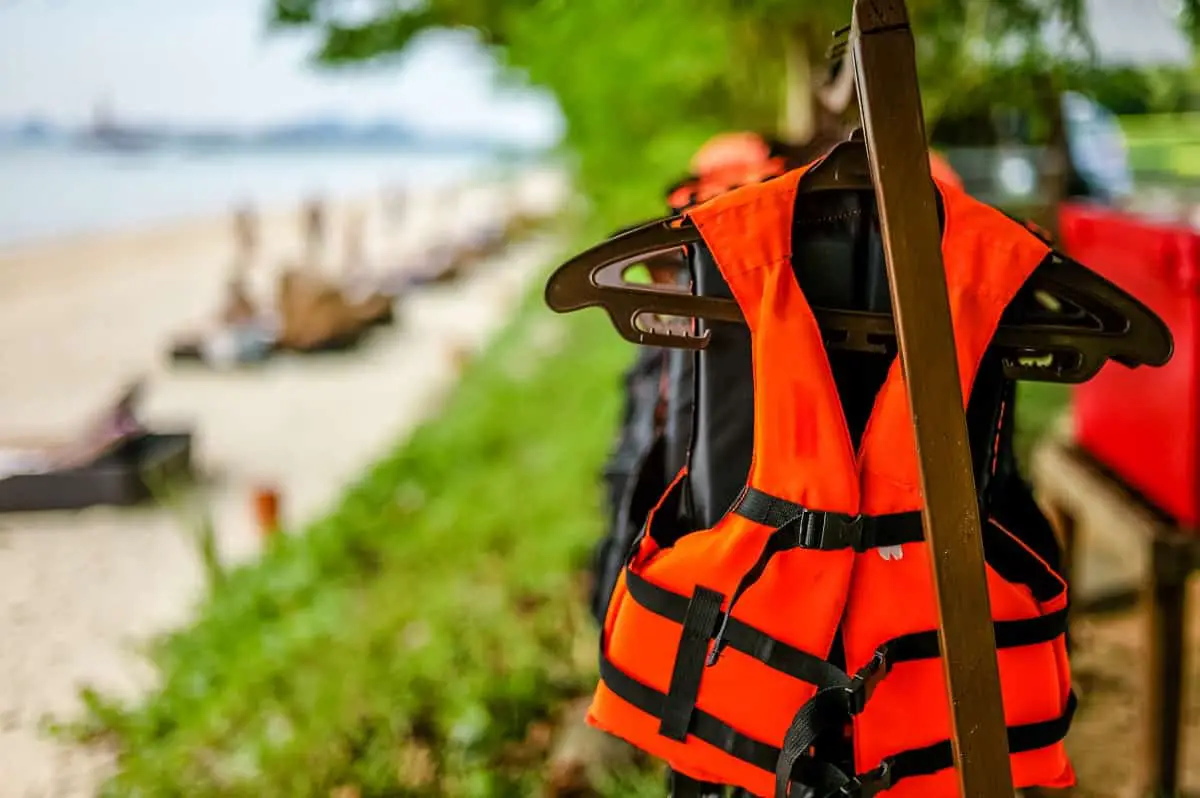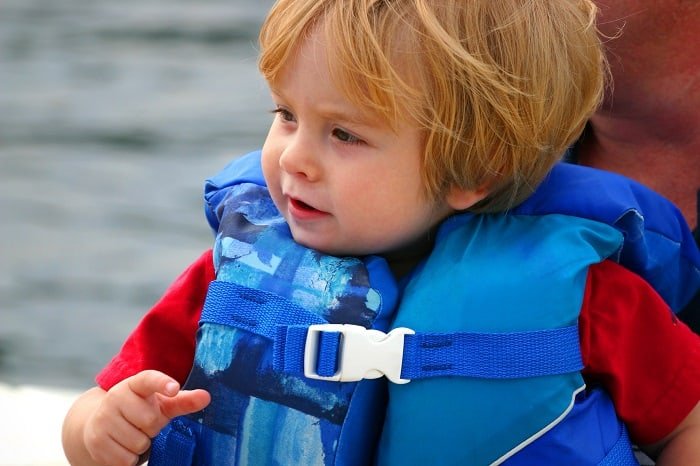Last Updated on July 23, 2022 by Ecorf
Kayaking is an experience you may not want to miss out on. Maybe once in a year or bi-monthly, you may want to have some time out on the water, where you enjoy floating with the surrounding natural scenery adding glamour to the whole affair.
Despite the thrills that come with kayaking that make paddlers itchy to get on their boats, you would still need to exercise caution. Understandably, you may not be the best paddler, but you can move a kayak to and from the water without hassles. But, eventualities are things we can’t predict. That informs the reason behind the conceptualization of Personal Flotation Devices (PDF), otherwise called a “Life Jacket”.
Table of Contents
What is a Life Jacket?
A life jacket is a device/piece of equipment that helps you to keep afloat on water. The device comes in handy when there’s an incident, such as when the wearer is in a state of danger while boating. It is the single most important piece of equipment because it helps you to keep safe in the event of a mishap.
Besides, it comes in different styles and sizes, such as a buoyancy aid, flotation suit, and life vest. Each of these is designed to give you convenience and an extra level of protection.
What are the Life Jacket Rules/Laws?
As typical with everything in life, specific laws and rules guide the usage of different kinds of materials. The same applies to the life jacket. Knowledge of these rules helps you to make use of your life jacket without getting in the way of the authorities.
Also, note that the kayak life jacket rules kayak life jacket laws differ by countries and regions. However, we would give you the generality of these rules, so you would have a perfect comprehension of how to use your lifesaver.
Below are the kayak life jacket laws you should have in mind when using the life jacket on your next kayaking trip.
-
Coast Guard Approval for Life Jackets
The U.S Maritime specifies that any kayak that must use a life jacket should comply with the dictates of the Coast Guard. The approval in that regard is considered one of the most effective ways of checkmating the excesses of paddlers that may want to bypass the kayak life jacket laws.
On its part, the U.S Coast Guard classifies the life jackets into four types, including Type I, Type II, Type III, and Type IV. The law specifies that any life jacket that would be used within the jurisdiction must comply with the different rules placed on each of the Types.
-
One Life Jacket for Each Person On Board
The rule of thumb is for paddlers/kayakers to comply with the law of having a life jacket onboard for each person aboard the boat. It’s worth mentioning that this is vital because it empowers you to secure your life and that of others on the vessel.
Also, the rule here is in line with the specifications of the U.S Coast Guard. Ideally, all vessels (including boast and kayaks), must have at least either of Type I, Type II, or the Type III life jacket for each person on board.
-
Keep a Life Jacket for Children
There’s an erroneous thought that only adults are at liberty to use a life jacket. While older individuals tend to have a better idea of how to use a life jacket, it’s also essential that the needs of the children are considered.
That informed the kayak life jacket rules that stipulated the manufacturing of life jackets for children. In that instance, the general law stipulates having a life jacket for children that are 12 years and above. The use of the U.S Coast Guard-approved life jacket for children within the age bracket (12 years and above) is tenable when they’re aboard a vessel (kayak or boat) that is less than 19 feet in length, except they’re in a fully enclosed area.
The selection must be in line with the state requirements, especially concerning their age brackets.
-
Throwable Life Jacket/PFD for 16 Feet Vessels
One of the kayak life jacket rules stipulates that vessels of 16 feet or longer must carry a throwable Personal Flotation Device (PFD) that is under the Type IV specifications of the U.S Coast-Guard. However, canoes and kayaks are exempted from this requirement.
-
The Size of the Life Jacket Matters
It can be an arduous task to figure out the right size of a life jacket to use on your kayak. It gets worrisome when you have other persons aboard with you, who would need to use the life jacket too. You may not have to bother much about it.
Although the sizes of the life jackets are not standard and vary by the manufacturers, you still have a chance to figure things out quickly. Ideally, life jackets that are approved by the U.S Coast Guard come with a tag or stencil marking. That reveals the type, the size, the amount of flotation, and the approved activities each of the life jackets can be used for.
On the other hand, you may want to use the tips below to figure out the right-sized life jacket you should choose:
-
For Adults
Adults should use the “Touchdown Test” to discover the life jacket that suits them. Here, they’re expected to put on the life jacket and raise their arms as though they’re signaling a touchdown. The adult wearer can then look to the left and then to the right. If the jacket doesn’t touch his/her chin in the course of doing that, then the life jacket is the right fit.
-
For Children
Children use the “Three-Inch Rule” to figure out the right kayak life jacket. In that instance, the child would stand upright, with the arms at the side. The child would then grab the shoulders of the life jacket and lift. If the child was able to move the life jacket more than three inches up (or above the ears), then that means the life jacket isn’t the right pick.
Instead, life jackets for children should not come up that high. That is because of how high it rides shows how it would fit them in water. Instead, the straps of the life jacket should be snug.
Final Words on Kayak Life Jacket Laws
Now that you’ve discovered the kayak life jacket rules, kayak life jacket laws, you may now go ahead to select the best size for you and your companions. Remember to share the tips by sharing this article with your loved ones.



